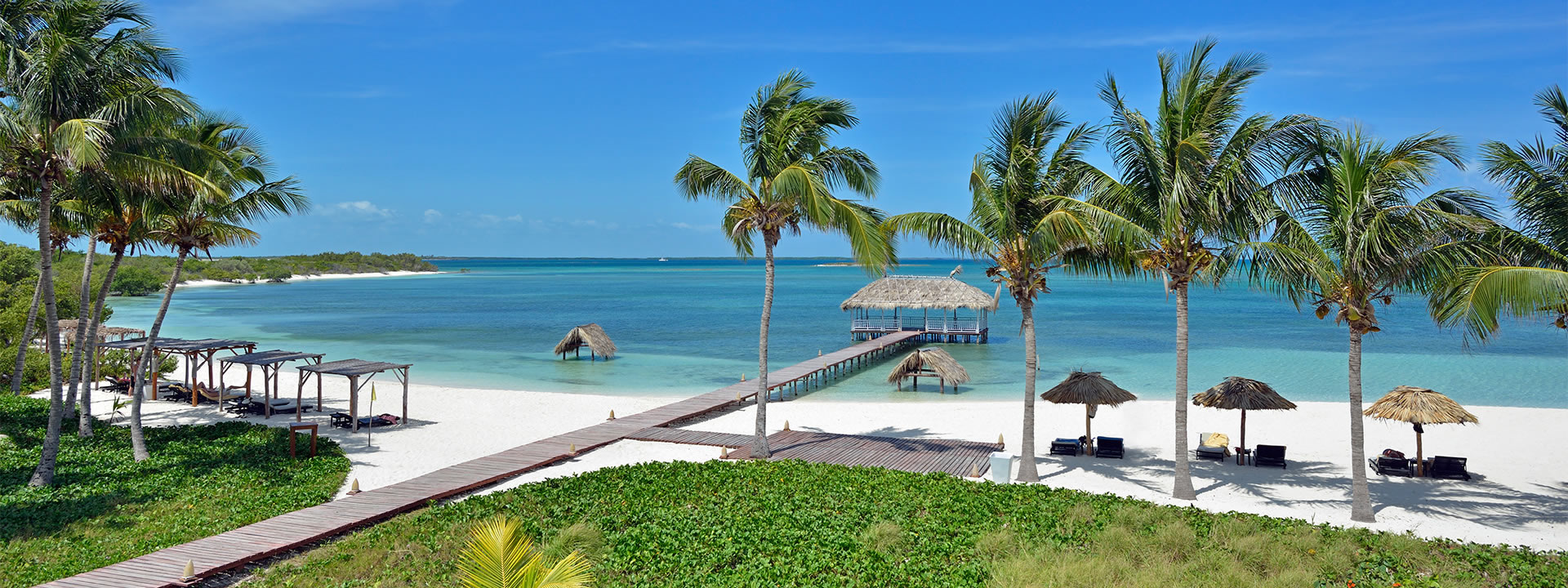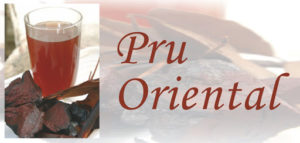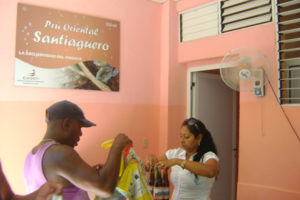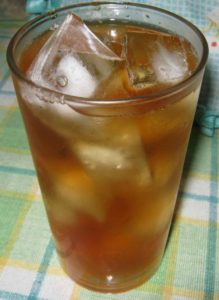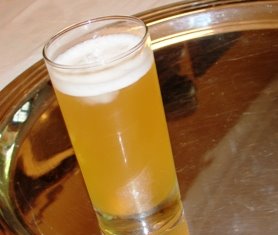 ALBITA RODRIGUEZ, CANTAUTORA QUE CUANDO CANTA LLEVA A CUBA CON ELLA. VIDEOS
ALBITA RODRIGUEZ, CANTAUTORA QUE CUANDO CANTA LLEVA A CUBA CON ELLA. VIDEOS
Albita Rodríguez, una de las mejores cantantes y compositoras de Cuba, nació en La Habana, Cuba, el 6 de junio de 1962. Albita ha continuado su asalto al exitoso desfile desde que emigró a los Estados Unidos en 1993.
Hija de músicos, Rodríguez adquirió su primera guitarra a la edad de 15 años. En cuatro años, estaba en camino al estrellato, convirtiéndose en la intérprete más joven en el popular show televisivo cubano Palmas y Canas. Su enfoque moderno de las tradicionales guajiras y canciones de Cuba atrajo a un público fiel en su tierra natal.
Ofrecido un contrato con un sello discográfico en Colombia en 1991, Rodríguez recibió permiso para vivir fuera de Cuba. Durante los siguientes dos años, grabó dos álbumes impresionantes que se distribuyeron en Colombia y América del Sur. Cuando surgió una oportunidad para ella y su banda, Albita y Su Grupo, de desertar a los Estados Unidos en 1993, Rodríguez aprovechó la oportunidad.
Al establecerse en Miami, se convirtió en una artista habitual en el Centro Vasco en la sección de La Pequeña Habana de la ciudad. La noticia de su talento se extendió rápidamente. En poco tiempo, a sus espectáculos asistieron personalidades conocidas, como Oprah Winfrey, Rosie O’Donnell, Quincy Jones y Sylvester Stallone. Cuando Emilio y Gloria Estefan vinieron a escucharla en 1984, quedaron tan impresionados que rápidamente la firmaron con la etiqueta de Emilio, Crescent Moon.
Su primer álbum estadounidense, ‘No se parece a nada’, lanzado en 1995, vendió más de 100,000 copias e incluyó el sencillo “Parranda, Laud y Son”, que se convirtió en un éxito en muchos países de habla hispana. El álbum ‘Dicen Que’, que coprodujo con Emilio Estefan Jr., esposo de Gloria Estefan y propietario del sello discográfico Crescent Moon distribuido por Epic, fue nombrado Mejor álbum tropical de 1997.
Ella ha sido invitada a actuar para cuatro funciones presidenciales, incluidas dos inauguraciones. En 2004 fundó su propio sello “Angel’s Dawn Records”, bajo el cual produjo y lanzó su CD Albita Llegó que ganó sus dos Grammys en la categoría de Mejor Álbum Tropical Contemporáneo. Su música también ha aparecido en la banda sonora de varias películas estadounidenses y extranjeras.
En 2005, Albita fue elegida para un papel importante en la obra musical producida en Broadway The Mambo Kings, donde trabajó durante seis meses para obtener excelentes críticas.
Albita también presenta su propio programa La Descarga con Albita (Jam Session with Albita).
En mayo de 2016, actuó en la obra Carmen, que interpretó en la reinventada Cuba de los años cincuenta. Dirigida por Christopher Renshaw, Carmen la Cubana tocó en el Théâtre du Châtelet de París.
DISCOGRAFIA.
Habrá Música Guajira (1988)
Cantare (1992)
Si se da la siembra (1991)
No Se Parece a Nada (1995)
Dicen Que (They Say That) (1996)
Una Mujer Como Yo (1997)
Son (Son) (2000)
Hecho a Mano (2002)
Albita Llegó (2004)
Albita Live (2006)
Mis Tacones (2009)
Albita (2017)
 ALBITA RODRIGUEZ, SONGWRITER, WHEN SINGING BRINGS CUBA WITH HER. VIDEOS.
ALBITA RODRIGUEZ, SONGWRITER, WHEN SINGING BRINGS CUBA WITH HER. VIDEOS.
One of Cuba’s best singers and songwriters, Albita Rodriguez was born in Habana, Cuba on June 6, 1962. Albita has continued her assault on the hit parade since emigrating to the United States in 1993.
The daughter of musicians, Rodriguez acquired her first guitar at the age of 15. Within four years, she was on her way to stardom, becoming the youngest performer on Cuba’s popular television showcase Palmas y Canas. Her modern approach to Cuba’s traditional guajiras and songs attracted a loyal following in her homeland.
Offered a contract with a record label in Colombia in 1991, Rodriguez was given permission to live outside of Cuba. Over the next two years, she recorded two impressive albums that were distributed in Colombia and South America. When an opportunity arose for her and her band, Albita y Su Grupo, to defect to the United States in 1993, Rodriguez jumped at the chance. Settling in Miami, she became a regular performer at Centro Vasco in the city’s Little Havana section. News of her talents spread quickly. Before long, her shows were attended by well-known personalities, including Oprah Winfrey, Rosie O’Donnell, Quincy Jones, and Sylvester Stallone. When Emilio and Gloria Estefan came to hear her in 1984, they were so impressed that they quickly signed her to Emilio’s label, Crescent Moon
Her first American album, ‘No Se Parece a Nada’, released in 1995, sold more than 100,000 copies and included the single “Parranda, Laud y Son, which became a chart-topping hit in many Latin-speaking countries. Her second American album, ‘Dicen Que’, which she co-produced with Emilio Estefan Jr., husband of Gloria Estefan and owner of the Epic-distributed Crescent Moon record label, was named Best Tropical Album of 1997.
She has been invited to perform for four Presidential functions, including two inaugurations. In 2004 she founded her own label “Angel’s Dawn Records” under which she produced and launched her CD Albita Llegó that won her two Grammys in the category of Best Contemporary Tropical Album. Her music has also been featured in the soundtrack of several American and foreign films.
In 2005, Albita was cast for a major role in the Broadway produced musical play The Mambo Kings, where she worked for six months to rave reviews.
Albita also hosts her own show La Descarga con Albita (Jam Session with Albita).
In May of 2016, she performed in the play Carmen which played in the reimagined 1950s Cuba. Directed by Christopher Renshaw, Carmen la Cubana played at the Théâtre du Châtelet in Paris.
https://youtu.be/ZW1Gdq4g9v8
DISCOGRAPHY.
Habrá Música Guajira (There Will Be Guajira Music) (1988)
Cantare (1992)
Si se da la siembra (1991)
No Se Parece a Nada (Unlike Anything Else) (1995)
Dicen Que (They Say That) (1996)
Una Mujer Como Yo (A Woman Like Me) (1997)
Son (Son) (2000)
Hecho a Mano (Handmade) (2002)
Albita Llegó (Albita Is Here) (2004)
Albita Live (2006)
Mis Tacones (2009)
Albita (2017)
Agencies/ Wiki/ CubanMusic/ Craig Harris/ Internet Photos/ YouTube/ Arnoldo Varona/ www.TheCubanistory.com
THE CUBAN HISTORY, HOLLYWOOD.




